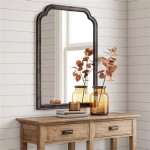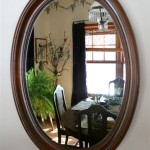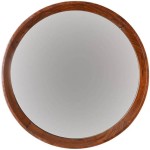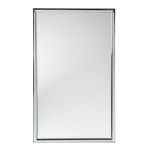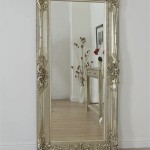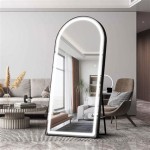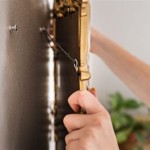Why Are Bathroom Mirrors So Expensive?
Bathroom mirrors, seemingly simple fixtures, can often carry surprisingly high price tags. Several factors contribute to this cost, ranging from the materials used to the intricacies of installation and the influence of current design trends.
One primary driver of cost is the type of glass used. Standard mirrors utilize float glass, a common and relatively inexpensive option. However, many bathroom mirrors, particularly those in higher price brackets, employ specialized glass types. These can include low-iron glass, which offers superior clarity and eliminates the greenish tinge sometimes seen in standard float glass. Another option is tempered glass, known for its enhanced safety features. Tempering involves heating and rapidly cooling the glass, making it significantly more resistant to breakage and shattering, reducing the risk of injury. These specialized glass types involve more complex manufacturing processes, contributing to a higher overall cost.
Beyond the glass itself, the mirror's features significantly impact the price. A simple, frameless mirror will typically be less expensive than one with an elaborate frame. Frames can be made from a variety of materials, including wood, metal, and plastic. High-end frames often incorporate premium materials like handcrafted wood, polished metals, or intricate mosaic designs, which naturally command a higher price. Integrated features such as built-in lighting, defogging mechanisms, and magnifying sections also add to the overall expense. These features involve additional components, wiring, and more complex assembly, increasing both material and labor costs.
Size and shape also play a role in determining the price of a bathroom mirror. Larger mirrors require larger sheets of glass, increasing material costs. Custom shapes and sizes, deviating from standard rectangular formats, often necessitate specialized cutting and finishing processes, adding to the overall expense. These custom shapes can be particularly prevalent in modern bathroom designs where unique geometric shapes are often favored.
Installation complexity can significantly impact the final cost. While some mirrors are designed for simple DIY installation, others, particularly larger or heavier mirrors, may require professional installation. Professionals possess the expertise and tools to ensure secure and proper mounting, preventing damage to the mirror or the surrounding wall. This professional installation adds to the overall project cost but is often essential for safety and longevity, especially with larger, heavier, or more complex mirror designs.
The retailer and brand also contribute to the price. High-end retailers and designer brands often command premium prices for their products, reflecting not only the quality of materials and craftsmanship but also the brand's perceived value and exclusivity. These brands often invest heavily in design and development, incorporating cutting-edge technologies and innovative features that differentiate their products from more standard offerings.
Current design trends can influence the cost of bathroom mirrors. For instance, the popularity of minimalist designs featuring sleek, frameless mirrors can drive up the demand for specific types of glass and finishing techniques, impacting the price. Similarly, trends favoring ornate or antique-style mirrors can increase the demand for specific frame materials and craftsmanship, leading to higher costs.
The manufacturing process itself also contributes to the overall cost. Producing high-quality mirrors requires specialized equipment and skilled labor. Processes like cutting, edging, polishing, and applying reflective coatings require precision and expertise. Furthermore, quality control measures, including rigorous inspections to ensure the mirror meets specific standards for clarity, reflectivity, and durability, add to the production cost and are reflected in the final price.
Shipping and handling can also influence the final price of a bathroom mirror. Mirrors, being fragile items, require specialized packaging and careful handling during transport to prevent damage. This specialized packaging and handling add to the overall cost, particularly for larger or more complex shapes. The distance between the manufacturing facility and the retail location also plays a role in transportation costs.
Finally, tariffs and import duties can impact the price of bathroom mirrors, particularly those manufactured overseas. These taxes and duties are levied on imported goods and can vary depending on the country of origin and the specific product. These costs are often passed on to the consumer, influencing the final retail price.

Why Are Mirrors So Expensive Find Out Now Upgradedhome Com

Why Are Bathroom Mirrors So Expensive House Caravan

Why Are Mirrors So Expensive 5 Important Factors To Know Moyes Glass

Lighted Bathroom Mirrors Are They Worth The Cost

Why Are Bathroom Mirrors So Expensive House Caravan
What Are The Pros And Cons Of Mirrors For Your Bathroom Quora
What Are The Pros And Cons Of Mirrors For Your Bathroom Quora

The Bathroom Mirrors Buyer S Guide Big

The Ultimate Bathroom Mirror Guide 2024
Which Brand Mirror Is Best For Bathroom Quora

